
|
|
|
|
|
|
|
|
|
|
|
|
|
|
|
|
|
|
|
|
|
|
|
|
|
|
|
|
|
|
|
|
|
|
|
|
|
|
|
|
|
|
|
|
|
|
|
|

The Regatta week-end in Syracuse, IN was a tremendous success- we all had a ton of laughs, great racing and great company.
For my part, I enjoyed the event, the wonderful hosts and the opportunity to meet so many of the folks I've had the privilege of working with over email and telephone. Bill Meinert did a fantastic job pulling this together, and many, many others worked hard to make this the success it was. Thanks all!
Ed Jakubas
Association Commodore
|
C-25 Standard Rig
1. Meinert
(Longwind) C-25 Tall Rig
1.
Milby
(Captiva Wind)
1. Beamer
(Daylight Again)
|
Click here to see the official times. |
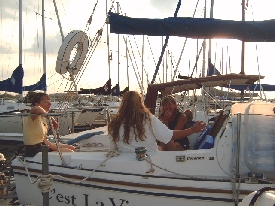 |
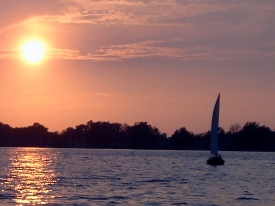 |
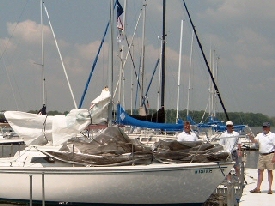 |
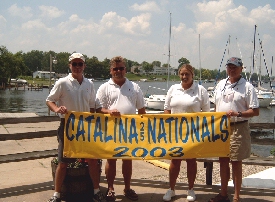 |
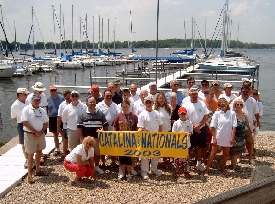 |
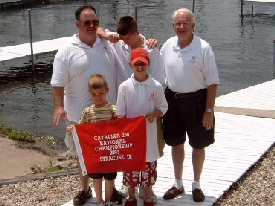 |
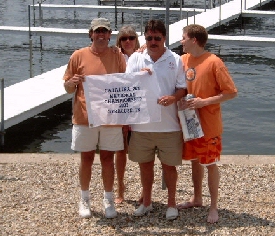 |
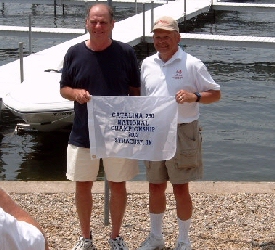 |
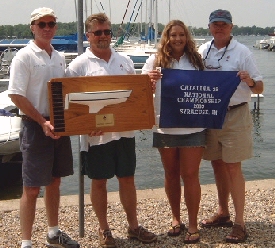 |
 |
More photos at the bottom.
Winds and Pother
Tidbits
by Don Peet, "Osmepneo",
C-25 SR/WK #1665
The winds during the Nationals were very interesting with two or three very distinct winds over the race course.
There was a land mass that lifted Port tack boats when you got close enough, so that you sailed very close to the lay line. However, after clearing the end of the peninsula, the wind was governed by a marshy area and substantially headed port tack, so that starboard was favored. Within both of these winds there were several substantial shifts. At one point, port was headed so we tacked right into a header and starboard was headed. That kind of condition seemed prevalent over the entire race course.
Wind strength was light to moderate, building during the day. Saturday's first race was sailed in 5-10, and the forth race in 10-15. Sunday morning's was was basically from the same direction, and the peninsula and marshy area effects were similar, but the wind was very, very patchy. Everyone sailed into a hole or two during this race, and got to sit. Steve, Jody and I spent the entire leg watching for wind, and we moved to wind when we could, even if that meant sailing relatively short tacks. the secret was staying in the wind. In that race we stayed in the center of the course, seeking the peninsula effect and rounded first significantly ahead of Bill and Bryan.
One other thing seemed very important!
Both Steve and Bryan had new paint and good finishes on the bottom. I suspect that made a big difference in the performance of their boats. I know it does in other conditions, no reason it didn't hear!
Steve's crew (Jody and me) fit together like a glove. We had hoped to sail Friday afternoon, but when the boat was ready thunderstorms were in the area. So our first sail was on the way to race course. But very quickly we discovered the best way to work together, so that we could keep the boat moving while we tacked, and so that accelerate and sail with good speed on both tacks. None of us (Steve, Jody or me) had sailed together before the first race.
The Racing
Ability of the C-250
by Steve Milby "Captiva
Wind", C-25 T/F #2554
Bryan Beamer wowed everyone with his C-250. In three of the four races on Saturday, Bryanís was the second boat to cross the finish line out of all the boats racing, and he consistently dogged the leader all around the racecourse. On average, the first boats across the finish line (C-25s) on Saturday only beat him by about 1 1/2 minutes per race. In some races he finished much closer. (I donít have the finishing times for the race on Sunday.) To those who have doubted the racing ability of the C-250, Bryan indisputably proved that a well-prepared and well-sailed C-250 can compete with and even beat tall and standard rig C-25s.
Bryan flew a 135% roller-furling headsail, and had a fresh coat of VC 17 bottom paint on the boat. His crew included his father, who is an outstanding racer, but who hasnít raced much in recent years. Bryan also has not raced much recently, but he describes himself as a youngster as a ďdock rat,Ē crewing for any racer who would let him. He obviously inherited his dadís ability. I know about Bryanís sailing background, because he and his dad raced at Brookville Lake in southern Indiana until the early 1980s, and his dad beat the socks off me the first time I ever raced, and many times afterward. As most of you know, Bryan now lives and sails with his family in Colorado, and coming to the Nationals was a long haul for him. With his performance, Bryan made all the rest of us respect the C-250.
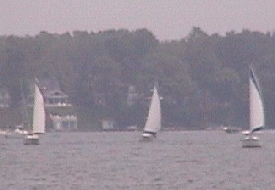 |
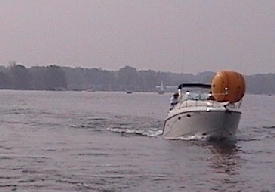 |
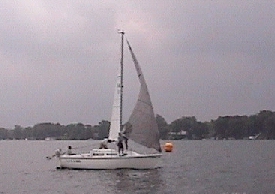 |
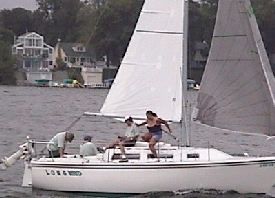 |
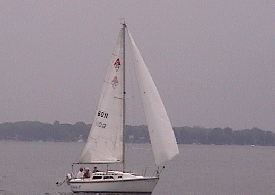 |
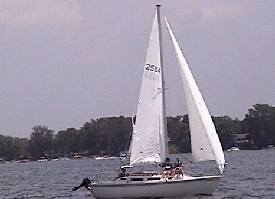 |
 |
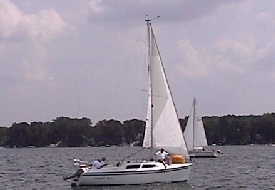 |
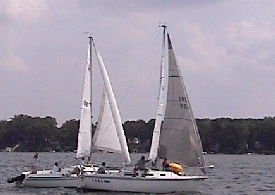 |
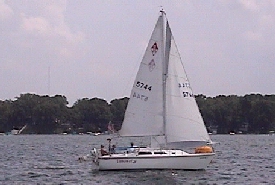 |
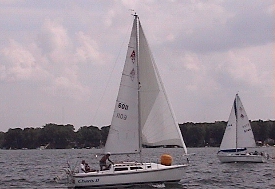 |
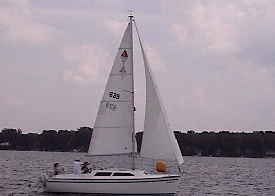 |
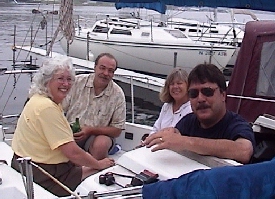 |
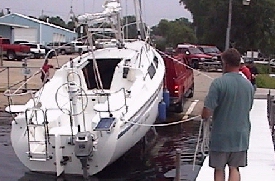 |
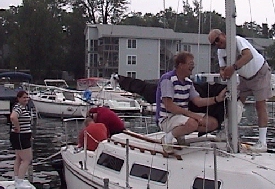 |
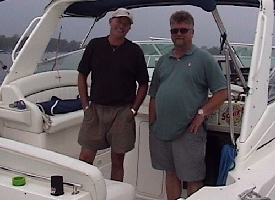 |
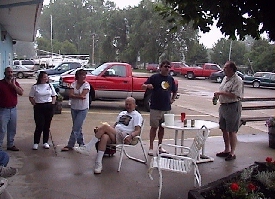 |
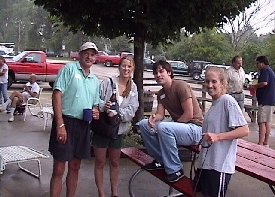 |
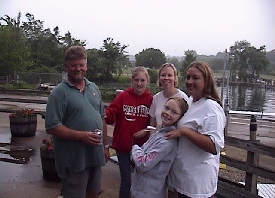 |
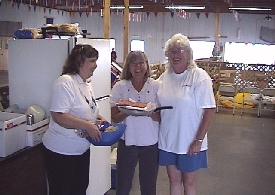 |
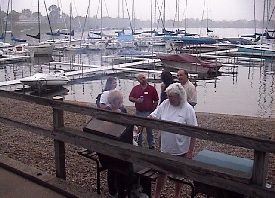 |
Click on an image for a larger picture. or Click here to start at the beginning
|